Austrian and Habsburg Studies
Austrian and Habsburg Studies
Since 1996, the Center has published a series of cutting-edge monographs and volumes of selected papers from its international, multidisciplinary conferences in the series Austrian and Habsburg Studies. Below is a list of all of the volumes in the series. All volumes are available as ebooks. Visit Berghahn Books for a complete listing.
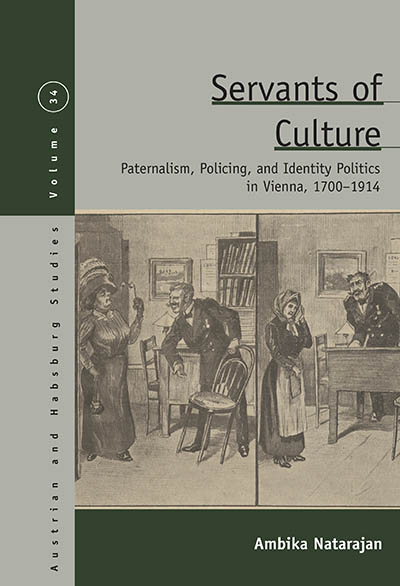
Servants of Culure: Paternalism, Policing, and Identity Politics in Vienna, 1700-1914
Austrian and Habsburg Studies, vol. 34
Ambika Natarajan
In nineteenth century Cisleithanian Austria, poor, working-class women underwent mass migrations from the countryside to urban centers for menial or unskilled labor jobs. Through legal provisions on women’s work in the Habsburg Empire, there was an increase in the policing and surveillance of what was previously a gender-neutral career, turning it into one dominated by thousands of female rural migrants. Servants of Culture provides an account of Habsburg servant law since the eighteenth century and uncovers the paternalistic and maternalistic assumptions and anxieties which turned the interest of socio-political players in improving poor living and working conditions into practices that created restrictive gender and class hierarchies. Through pioneering analysis of the agendas of medical experts, police, socialists, feminists, legal reformers, and even serial killers, this volume puts forth a neglected history of the state of domestic service discourse at the turn of the 19th century and how it shaped and continues to shape the surveillance of women.

The Vienna Gestapo, 1938-1945: Crimes, Perpetrators, Victims
Austrian and Habsburg Studies, vol. 33
Edited by Elisabeth Boeckl-Klamper, Thomas Mang, and Wolfgang Neugebauer
The Vienna Gestapo headquarters was the largest of its kind in the German Reich and the most important instrument of Nazi terror in Austria, responsible for the persecution of Jews, suppression of resistance, and policing of forced labourers. Of the more than fifty thousand people arrested by the Vienna Gestapo, many were subjected to torturous interrogation before being either sent to concentration camps or handed over to the Nazi judiciary for prosecution. This comprehensive survey by three expert historians focuses on these victims of repression and persecution as well as the structure of the Vienna Gestapo and the perpetrators of its crimes.
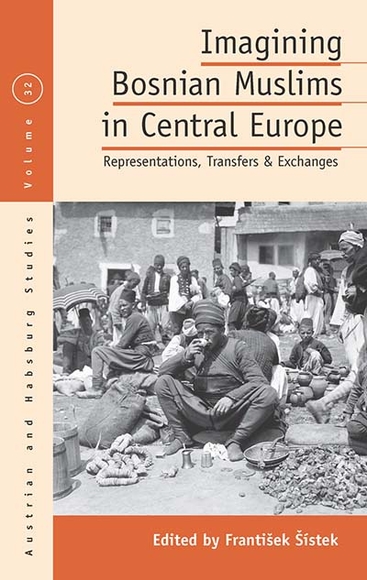
Imagining Bosnian Muslims in Central Europe: Representations, Transfers & Exchanges
Austrian and Hasburg Studies, vol. 32
Edited by František Šístek
As a Slavic-speaking religious and ethnic “Other” living just a stone’s throw from the symbolic heart of the continent, the Muslims of Bosnia and Herzegovina have long occupied a liminal space in the European imagination. To a significant degree, the wider representations and perceptions of this population can be traced to the reports of Central European—and especially Habsburg—diplomats, scholars, journalists, tourists, and other observers in the late nineteenth and early twentieth centuries. This volume assembles contributions from historians, anthropologists, political scientists, and literary scholars to examine the political, social, and discursive dimensions of Bosnian Muslims’ encounters with the West since the nineteenth century.
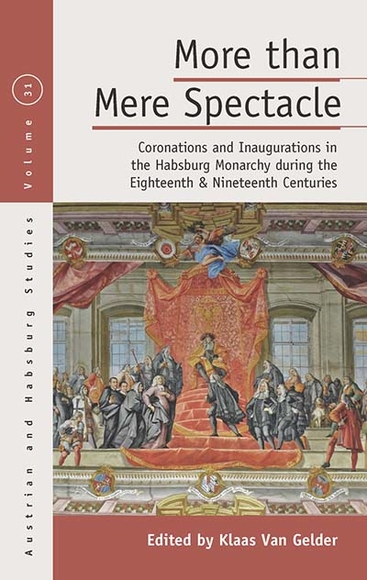
More than Mere Spectacle: Coronations and Inaugurations in the Habsburg Monarchy during the Eighteenth and Nineteenth Centuries
Austrian and Habsburg Studies, vol. 31
Edited by Klass Van Gelder, Afterword by Helen Watanabe-O'Kelly
Across the medieval and early modern eras, new rulers were celebrated with increasingly elaborate coronations and inaugurations that symbolically conferred legitimacy and political power upon them. Many historians have considered rituals like these as irrelevant to understanding modern governance—an idea that this volume challenges through illuminating case studies focused on the eighteenth- and nineteenth-century Habsburg lands. Taking the formal elasticity of these events as the key to their lasting relevance, the contributors explore important questions about their political, legal, social, and cultural significance and their curious persistence as a historical phenomenon over time.

Estates & Constitutions: The Parliament in Eighteenth-Century Hungary
Austrian & Habsburg Studies, vol. 30
István M. Szijártó, Translated from the Hungarian by David Robert Evans
Across eighteenth-century Europe, political power resided overwhelmingly with absolute monarchs, with notable exceptions including the much-studied British Parliament as well as the frequently overlooked Hungarian Diet, which placed serious constraints on royal power and broadened opportunities for political participation. Estates and Constitution provides a rich account of Hungarian politics during this period, restoring the Diet to its rightful place as one of the era’s major innovations in government. István M. Szijártó traces the religious, economic, and partisan forces that shaped the Diet, putting its historical significance into an international perspective.
New York, Berghahn Books, 2020, 362 pp., ISBN: 978-1-78920-879-5, $155.
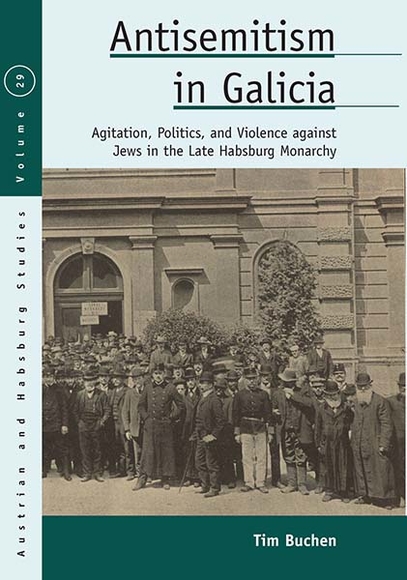
Antisemitism in Galicia: Agitation, Politics, and Violence against Jews in the Late Habsburg Monarchy
Austrian and Habsburg Studies, vol. 29
Tim Buchen, Translated from the German by Charlotte Hughes-Kreutzmüller
In the last third of the nineteenth century, the discourse on the “Jewish question” in the Habsburg crownlands of Galicia changed fundamentally, as clerical and populist politicians emerged to denounce Jewish assimilation and citizenship. This pioneering study investigates the interaction of agitation, violence, and politics against Jews on the periphery of the Danube monarchy. In its comprehensive analysis of the functions and limitations of propaganda, rumors, and mass media, it shows just how significant antisemitism was to the politics of coexistence among Christians and Jews on the eve of the Great War.
New York: Berghahn Books, 2020, 326 pp., ISBN: 978-1-78920-770-5, $140.
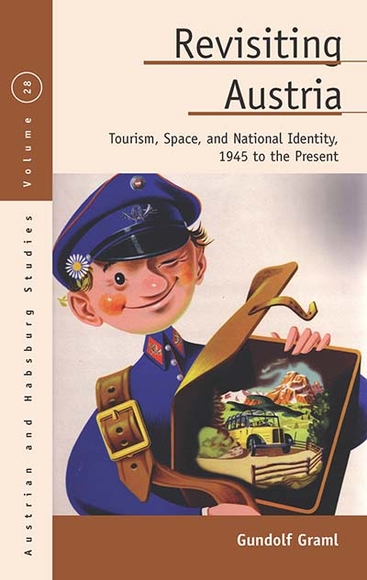
Revisiting Austria: Tourism, Space, and National Identity, 1945 to the Present
Austrian and Habsburg Studies, vol. 28
Gundolf Graml
Following the transformations and conflicts of the first half of the twentieth century, Austria’s emergence as an independent democracy heralded a new era of stability and prosperity for the nation. Among the new developments was mass tourism to the nation’s cities, spa towns, and wilderness areas, a phenomenon that would prove immensely influential on the development of a postwar identity. Revisiting Austria incorporates films, marketing materials, literature, and first-person accounts to explore the ways in which tourism has shaped both international and domestic perceptions of Austrian identity even as it has failed to confront the nation’s often violent and troubled history.
New York: Berghahn Books, 2020, 292 pp., ISBN: 978-1-78920-448-3, $149.

Empty Signs, Historical Imaginaries: The Entangled Nationalization of Names and Naming in a Late Habsburg Borderland
Austrian and Habsburg Studies, vol. 27
Ágoston Berecz
Set in a multiethnic region of the nineteenth-century Habsburg Empire, this thoroughly interdisciplinary study maps out how the competing Romanian, Hungarian, and German nationalization projects dealt with proper names. With particular attention to their function as symbols of national histories, Berecz makes a case for names as ideal guides for understanding historical imaginaries and how they operate socially. In tracing the changing fortunes of nationalization movements and the ways in which their efforts were received by mass constituencies, he provides an innovative and compelling account of the historical utilization, manipulation, and contestation of names.
New York: Berghahn Books, 2020, 350 pp., ISBN: 978-1-78920-634-0, $149.
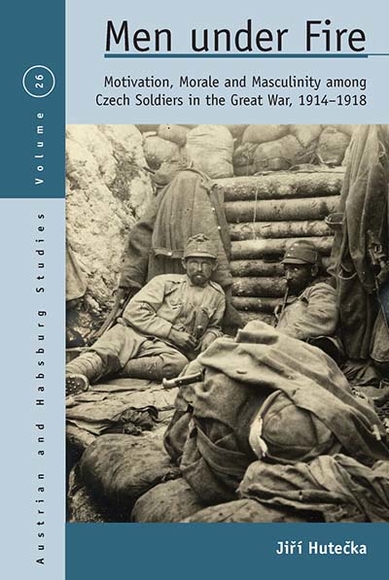
Men Under Fire: Motivation, Morale, and Masculinity among Czech Soldiers in the Great War, 1914-1918
Austrian and Habsburg Studies, vol. 26
Jiří Hutečka, Translated from the Czech
In historical writing on World War I, Czech-speaking soldiers serving in the Austro-Hungarian military are typically studied as Czechs, rarely as soldiers, and never as men. As a result, the question of these soldiers’ imperial loyalties has dominated the historical literature to the exclusion of any debate on their identities and experiences. Men under Fire provides a groundbreaking analysis of this oft-overlooked cohort, drawing on a wealth of soldiers’ private writings to explore experiences of exhaustion, sex, loyalty, authority, and combat itself. It combines methods from history, gender studies, and military science to reveal the extent to which the Great War challenged these men’s senses of masculinity, and to which the resulting dynamics influenced their attitudes and loyalties.
New York: Berghahn Books, 2019, 300 pp., ISBN: 978-1-78920-541-1, $135.
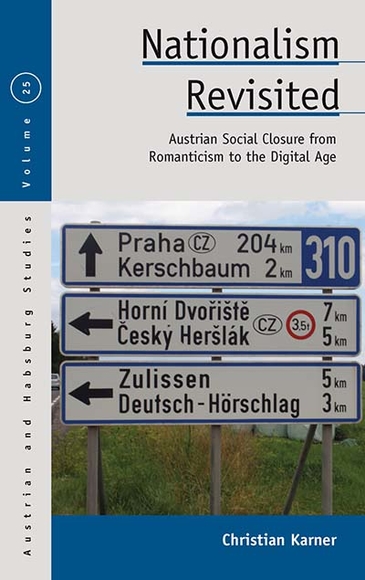
Nationalism Revisited: Austrian Social Closure from Romanticism to the Digital Age
Austrian and Habsburg Studies, vol. 25
Christian Karner
Focused on the German-speaking parts of the former Habsburg Empire, and on present-day Austria in particular, this book offers a series of highly innovative analyses of the interplay of nationalism’s discursive and institutional facets. Here, Christian Karner develops a distinctive perspective on Austrian nationalism over the longue durée, tracing nationalistic ways of thinking and mobilizing from the late eighteenth century to the present. Through close analyses of key texts representing diverse settings and historical episodes, this book traces the connections, continuities, and ruptures that have characterized the varieties of Austrian nationalism.
New York: Berghahn Books, 2019, 308 pp., ISBN: 978-1-78920-452-0, $135.

Entangled Entertainers: Jews and Popular Culture in Fin-de-Siècle Vienna
Austrian and Habsburg Studies, vol. 24
Klaus Hödl, Translated from the German by Corey Twitchell
Viennese popular culture at the turn of the twentieth century was the product of the city’s Jewish and non-Jewish residents alike. While these two communities interacted in a variety of ways to their mutual benefit, Jewish culture was also inevitably shaped by the city’s persistent bouts of antisemitism. This fascinating study explores how Jewish artists, performers, and impresarios reacted to prejudice, showing how they articulated identity through performative engagement rather than anchoring it in origin and descent. In this way, they attempted to transcend a racialized identity even as they indelibly inscribed their Jewish existence into the cultural history of the era.
New York: Berghahn Books, 2019, 194 pp., ISBN: 978-1-78920-030-0, $135.
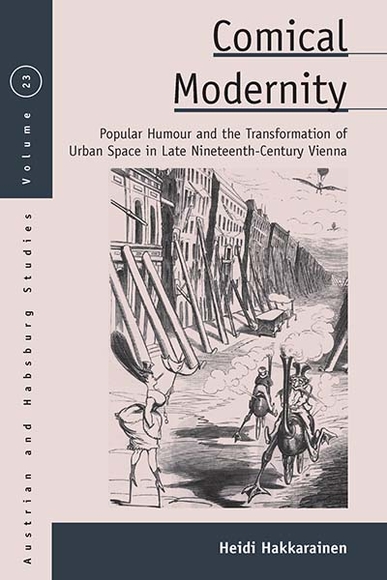
Comical Modernity: Popular Humour and the Transformation of Urban Space in Late Nineteenth Century Vienna
Austrian and Habsburg Studies, vol. 23
Heidi Hakkarainen
Though long associated with a small group of coffeehouse elites around the turn of the twentieth century, Viennese “modernist” culture had roots that reached much further back and beyond the rarefied sphere of high culture. In Comical Modernity, Heidi Hakkarainen looks at Vienna in the second half of the nineteenth century, a period of dramatic urban renewal during which the city’s rapidly changing face was a mainstay of humorous magazines, books, and other publications aimed at middle-class audiences. As she shows, humor provided a widely accessible means of negotiating an era of radical change.
New York: Berghahn Books, 2019, 288 pp., ISBN: 978-1-78920-273-1, $97.50.

Embers of Empire: Continuity and Rupture in the Hasburg Successor States after 1918
Austrian and Habsburg Studies, vol. 22
Edited by Paul Miller and Claire Morelon, Afterword by Pieter Judson
The collapse of the Habsburg Monarchy at the end of World War I ushered in a period of radical change for East-Central European political structures and national identities. Yet this transformed landscape inevitably still bore the traces of its imperial past. Breaking with traditional histories that take 1918 as a strict line of demarcation, this collection focuses on the complexities that attended the transition from the Habsburg Empire to its successor states. In so doing, it produces new and more nuanced insights into the persistence and effectiveness of imperial institutions, as well as the sources of instability in the newly formed nation-states.
New York: Berghahn Books, 2018, 366 pp., ISBN: 978-1-78920-022-5, $130.
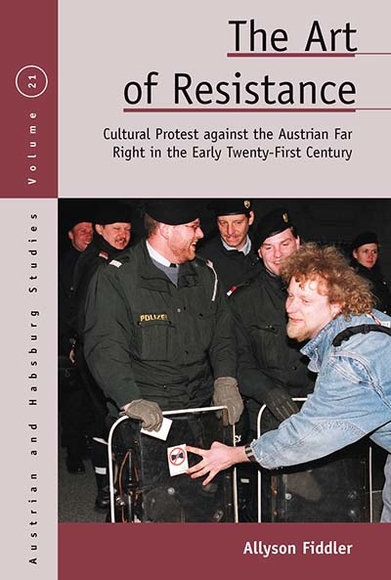
The Art of Resistance: Cultural Protest against the Austrian Far Right in the Early Twenty-First Century
Austrian and Habsburg Studies, vol. 21
Allyson Fiddler
Well before the far-right resurgence that has most recently transformed European politics, Austria’s 1999 parliamentary elections surprised the world with the unexpected success of the Freedom Party of Austria and its charismatic leader, Jörg Haider. The party’s perceived xenophobia, isolationism, and unabashed nationalism in turn inspired a massive protest movement that expressed opposition not only through street protests but also in novels, plays, films, and music. Through careful readings of this varied cultural output, The Art of Resistance traces the aesthetic styles and strategies deployed during this time, providing critical context for understanding modern Austrian history as well as the European protest movements of today.
New York: Berghahn Books, 2018, 224 pp. Cloth, ISBN: 978-1-78920-046-1, $120.

The Monumental Nation: Magyar Nationalism and Symbolic Politics in Fin-de-siècle Hungary
Austrian and Habsburg Studies, vol. 20
Bálint Varga
From the 1860s onward, Habsburg Hungary attempted a massive project of cultural assimilation to impose a unified national identity on its diverse populations. In one of the more quixotic episodes in this “Magyarization,” large monuments were erected near small towns commemorating the medieval conquest of the Carpathian Basin—supposedly, the moment when the Hungarian nation was born. This exactingly researched study recounts the troubled history of this plan, which—far from cultivating national pride—provoked resistance and even hostility among provincial Hungarians. Author Bálint Varga thus reframes the narrative of nineteenth-century nationalism, demonstrating the complex relationship between local and national memories.
New York: Berghahn Books, 2016, 300 pp. Cloth, ISBN: 978-1-78533-313-2, $130.

Tropics of Vienna: Colonial Utopias of the Habsburg Empire
Austrian and Habsburg Studies, vol. 19
Ulrich E. Bach
The Austrian Empire was not a colonial power in the sense that fellow actors like 19th-century England and France were. It nevertheless oversaw a multinational federation where the capital of Vienna was unmistakably linked with its eastern periphery in a quasi-colonial arrangement that inevitably shaped the cultural and intellectual life of the Habsburg Empire. This was particularly evident in the era’s colonial utopian writing, and Tropics of Vienna blends literary criticism, cultural theory, and historical analysis to illuminate this curious genre. By analyzing the works of Leopold von Sacher-Masoch, Theodor Herzl, Joseph Roth, and other representative Austrian writers, it reveals a shared longing for alternative social and spatial configurations beyond the concept of the “nation-state” prevalent at the time.
New York: Berghahn Books, 2016, 152 pp. Cloth, ISBN: 978-1-78533-132-9, $80.
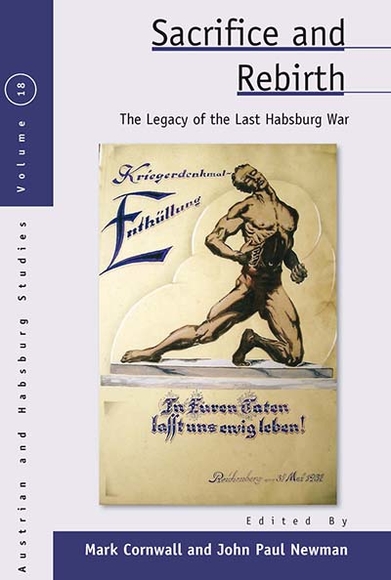
Sacrifice and Rebirth: The Legacy of the Last Habsburg War
Austrian and Habsburg Studies, vol. 18
Edited by Mark Cornwall and John Paul Newman
When Austria-Hungary broke up at the end of the First World War, the sacrifice of one million men who had died fighting for the Habsburg monarchy now seemed to be in vain. This book is the first of its kind to analyze how the Great War was interpreted, commemorated, or forgotten across all the ex-Habsburg territories. Each of the book’s twelve chapters focuses on a separate region, studying how the transition to peacetime was managed either by the state, by war veterans, or by national minorities. This “splintered war memory,” where some posed as victors and some as losers, does much to explain the fractious character of interwar Eastern Europe.
New York: Berghahn Books, 2016, 306 pp. Cloth, ISBN: 978-1-78238-848-7, $120.

Understanding Multiculturalism: The Habsburg Central European Experience
Austrian and Habsburg Studies, vol. 17
Edited by Johannes Feichtinger and Gary B. Cohen
Multiculturalism has long been linked to calls for tolerance of cultural diversity, but today many observers are subjecting the concept to close scrutiny. After the political upheavals of 1968, the commitment to multiculturalism was perceived as a liberal manifesto, but in the post-9/11 era, it is under attack for its relativizing and essentializing implications. The essays in this collection offer a nuanced analysis of the multifaceted cultural experience of Central Europe under the late Habsburg monarchy and beyond. The authors examine how culturally coded social spaces can be described and understood historically without adopting categories formerly employed to justify the definition and separation of groups into nations, ethnicities, or homogeneous cultures.
New York: Berghahn Books, 2014, 256 pp., ISBN: 978-1-78238-264-5, $135.
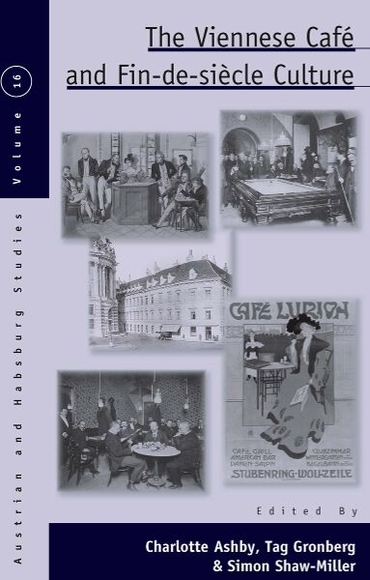
The Viennese Café and Fin-de-Siècle Culture
Austrian and Habsburg Studies, vol. 16
Edited by Charlotte Ashby, Tag Gronberg, and Simon Shaw-Miller
The Viennese café was a key site of urban modernity around 1900. In the rapidly growing city it functioned simultaneously as home and workplace, affording opportunities for both leisure and intellectual exchange. This volume explores the nature and function of the coffeehouse in the social, cultural, and political world of fin-de-siècle Vienna. Just as the café served as a creative meeting place within the city, so this volume initiates conversations between different disciplines focusing on Vienna 1900. Contributions are drawn from the fields of social and cultural history, literary studies, Jewish studies and art, and architectural and design history. A fresh perspective is also provided by a selection of comparative articles exploring coffeehouse culture elsewhere in Eastern Europe.
New York: Berghahn Books, 2013, 244 pp., ISBN: 978-0-85745-764-6, $135.

Territorial Revisionism and the Allies of Germany in the Second World War: Goals, Expectations, Practices
Austrian and Habsburg Studies, vol. 15
Edited by Marina Cattaruzza, Stefan Dyroff, and Dieter Langewiesche
A few years after the Nazis came to power in Germany, an alliance of states and nationalistic movements formed revolving around the German axis. That alliance, the states involved, and the interplay between their territorial aims and those of Germany during the interwar period and World War II is at the core of this volume. This "territorial revisionism" came to include all manner of political and military measures that attempted to change existing borders. Taking into account not just interethnic relations but also the motivations of states and nationalizing ethnocratic ruling elites, this volume reconceptualizes the history of East Central Europe during World War II. In so doing, it presents a clearer understanding of some of the central topics in the history of the War itself and offers an alternative to standard German accounts of the period 1933-1945 and East European nation-states' histories.
New York: Berghahn Books, 2013, 210 pp., ISBN: 978-0-85745-738-7, $120.

Journeys into Madness: Mapping Mental Illness in the Austro-Hungarian Empire
Austrian and Habsburg Studies, vol. 14
Edited by Gemma Blackshaw and Sabine Wieber
At the turn of the century, Sigmund Freud's investigation of the mind represented a particular journey into mental illness, but it was not the only exploration of this territory during the Austro-Hungarian Empire. Sanatoriums were the new tourism destinations, psychiatrists were collecting artworks produced by patients, and writers were developing innovative literary techniques to convey a character's interior life. This collection of essays uses the framework of journeys in order to highlight the diverse artistic, cultural, and medical responses to a peculiarly Viennese anxiety about the madness of modern times.
New York: Berhahn Books, 2012, 213 pp., ISBN: 978-08745-458-4, $120.
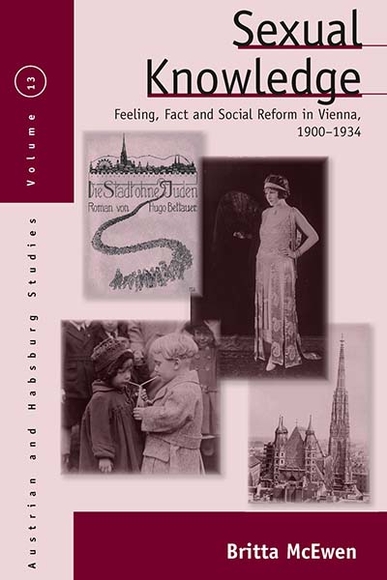
Sexual Knowledge: Feeling, Fact, and Social Reform in Vienna, 1900-1934
Austrian and Habsburg Studies, vol. 13
Britta McEwen
Vienna's unique intellectual, political, and religious traditions had a powerful impact on the transformation of sexual knowledge in the early twentieth century. Whereas turn-of-the-century sexology, as practiced in Vienna as medical science, sought to classify and heal individuals, during the interwar years, sexual knowledge was employed by a variety of actors to heal the social body: the truncated, diseased, and impoverished population of the newly created Republic of Austria. Based on rich source material, this book charts cultural changes that are hallmarks of the modern era, such as the rise of companionate marriage, the role of expert advice in intimate matters, and the body as a source of pleasure and anxiety.
New York: Berghahn Books, 2012. 240 pp., ISBN: 978-0-85745-337-2, $120.

"Vienna is Different"
Austrian and Habsburg Studies, vol. 12
Hillary Hope Herzog
Assessing the impact of fin-de-siècle Jewish culture on subsequent developments in literature and culture, this book is the first to consider the historical trajectory of Austrian-Jewish writing across the 20th century. It examines how Vienna, the city that stood at the center of Jewish life in the Austrian Empire and later the Austrian nation, assumed a special significance in the imaginations of Jewish writers as a space and an idea. The author focuses on the special relationship between Austrian-Jewish writers and the city to reveal a century-long pattern of living in tension with the city, experiencing simultaneously acceptance and exclusion, feeling “unheimlich heimisch” (eerily at home) in Vienna.
New York: Berghahn Books, 2011. 298 pp., ISBN: 978-0-85745-181-1, $135.

Diversity and Dissent: Negotiating Religious Difference in Central Europe, 1500-1800
Austrian and Habsburg Studies, vol. 11
Howard Louthan
Early modern Central Europe was the continent’s most decentralized region politically and its most diverse ethnically and culturally. With the onset of the Reformation, it also became Europe’s most religiously divided territory and potentially its most explosive in terms of confessional conflict and war. Focusing on the Holy Roman Empire and the Polish-Lithuanian Commonwealth, this volume examines the tremendous challenge of managing confessional diversity in Central Europe between 1500 and 1800. Addressing issues of tolerance, intolerance, and ecumenism, each chapter explores a facet of the complex dynamic between the state and the region’s Catholic, Protestant, Orthodox, Utraquist, and Jewish communities. The development of religious toleration—one of the most debated questions of the early modern period—is examined here afresh, with careful consideration of the factors and conditions that led to both confessional concord and religious violence.
New York: Berghahn Books, 2011. 264 pp., ISBN: 978-0-85745-108-8, $135.

Embodiments of Power: Building of Baroque Cities in Europe
Austrian and Habsburg Studies, vol. 10
Gary Cohen and Franz A.J. Szabo
The period of the baroque (late sixteenth to mid-eighteenth centuries) saw extensive reconfiguration of European cities and their public spaces. Yet, this transformation cannot be limited merely to signifying a style of art, architecture, and decor. Rather, the dynamism, emotionality, and potential for grandeur that were inherent in the baroque style developed in close interaction with the need and desire of post-Reformation Europeans to find visual expression for the new political, confessional, and societal realities. Highly illustrated, this volume examines these complex interrelationships among architecture and art, power, religion, and society from a wide range of viewpoints and localities. From Krakow to Madrid and from Naples to Dresden, cities were reconfigured visually as well as politically and socially. Power, in both its political and architectural guises, had to be negotiated among constituents ranging from monarchs and high churchmen to ordinary citizens. Within this process, both rulers and ruled were transformed: Europe left behind the last vestiges of the medieval and arrived on the threshold of the modern.
New York: Berghahn Books, 2008. 320 pp., ISBN: 978-1-84545-433-3, $135.
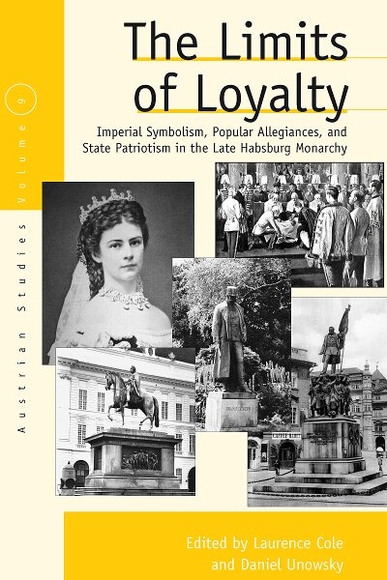
The Limits of Loyalty: Imperial Symbolism, Popular Allegiances, and State Patriotism in the Late Habsburg Monarchy
Austrian and Habsburg Studies, vol. 9
Laurence Cole and Daniel Unowsky
The overwhelming majority of historical work on the late Habsburg Monarchy has focused primarily on national movements and ethnic conflicts, with the result that too little attention has been devoted to the state and ruling dynasty. This volume is the first of its kind to concentrate on attempts by the imperial government to generate a dynastic-oriented state patriotism in the multinational Habsburg Monarchy. It examines those forces in state and society which tended toward the promotion of state unity and loyalty towards the ruling house. These essays, all original contributions and written by an international group of historians, provide a critical examination of the phenomenon of “dynastic patriotism” and offer a richly nuanced treatment of the multinational empire in its final phase.
New York: Berghahn Books, 2007. 258 pp., ISBN: 978-1-84545-202-5, $135.

Crimes, Jews, and News: Vienna 1895-1914
Austrian and Habsburg Studies, vol. 8
Daniel M. Vyleta
Crimes committed by Jews, especially ritual murders, have long been favorite targets in the antisemitic press. This book investigates popular and scientific conceptualizations of criminals current in Austria and Germany at the turn of the last century and compares these to those in the contemporary antisemitic discourse. It challenges received historiographic assumptions about the centrality of criminal bodies and psyches in late nineteenth- and early twentieth-century criminology and argues that contemporary antisemitic narratives constructed Jewish criminality not as a biologico-racial defect, but rather as a coolly manipulative force that aimed at the deliberate destruction of the basis of society itself. Through the lens of criminality this book provides new insight into the spread and nature of antisemitism in Austria-Hungary around 1900. The book also provides a re-evaluation of the phenomenon of modern Ritual Murder Trials by placing them into the context of wider narratives of Jewish crime.
New York: Berghahn Books, 2007. 266 pp., ISBN: 978-1-84545-181-3, $135.

The Environment and Sustainable Development in the New Central Europe
Austrian and Habsburg Studies, vol. 7
Zbigniew Bochniarz and Gary Cohen
With the enlargement of the European Union, the accession countries are coming under pressure to develop and meet EU standards for environmental protection and sustainable development. In this ongoing process, global economic liberalization, regulatory policy, conservation, and lifestyle issues are all involved, and creative solutions will have to be found. Historians, geographers, economists, ecologists, business management experts, public policy specialists, and community organizers have come together in this volume and examine, for the first time, environmental issues ranging from national and regional policy and macroeconomics to local studies in community regeneration. The evidence suggests that, far from being mere passive recipients of instruction and assistance from outside, the people of Central and East Central Europe have been engaged actively in working out solutions to these problems. Several promising cases illustrate opportunities to overcome crisis situations and offer examples of good practices, while others pose warnings. The experiences of these countries in wrestling with issues of sustainability continue to be of importance to policy development within the EU and may serve also as examples for both developed and developing countries worldwide.
New York: Berghahn Books, 2006. 280 pp., ISBN: 978-1-84545-144-8, $135.

Constructing Nationalities in East Central Europe
Austrian and Habsburg Studies, vol. 6
Pieter Judson and Marsha L. Rozenblit
The hundred years between the revolutions of 1848 and the population transfers of the mid-twentieth century saw the nationalization of culturally complex societies in East Central Europe. This fact has variously been explained in terms of modernization, state building and nation-building theories, each of which treats the process of nationalization as something inexorable, a necessary component of modernity. Although more recently social scientists gesture to the contingencies that may shape these larger developments, this structural approach makes scholars far less attentive to the “hard work” (ideological, political, social) undertaken by individuals and groups at every level of society who tried themselves to build “national” societies. The essays in this volume make us aware of how complex, multi-dimensional and often contradictory this nationalization process in East Central Europe actually was. The authors document attempts and failures by nationalist politicians, organizations, activists and regimes from 1848 through 1948 to give East-Central Europeans a strong sense of national self-identification. They remind us that only the use of dictatorial powers in the 20th century could actually transform the fantasy of nationalization into a reality, albeit a brutal one.
New York: Berghahn Books, 2004. 316 pp., ISBN: 978-1-57181-175-2, $135.
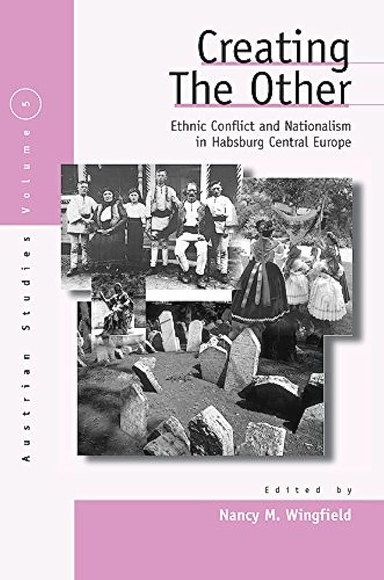
Creating The Other: Ethnic Conflict and Nationalism in Habsburg Central Europe
Austrian and Habsburg Studies, vol. 5
Nancy Wingfield
The historic myths of a people/nation usually play an important role in the creation and consolidation of the basic concepts from which the self-image of that nation derives. These concepts include not only images of the nation itself, but also images of other peoples. Although the construction of ethnic stereotypes during the "long" nineteenth century initially had other functions than simply the homogenization of the particular culture and the exclusion of "others" from the public sphere, the evaluation of peoples according to criteria that included "level of civilization" yielded "rankings" of ethnic groups within the Habsburg Monarchy. That provided the basis for later, more divisive ethnic characterizations of exclusive nationalism, as addressed in this volume that examines the roots and results of ethnic, nationalist, and racial conflict in the region from a variety of historical and theoretical perspectives.
New York: Berghahn Books, 2003. 272 pp., ISBN: 978-1-57181-384-8, $135.
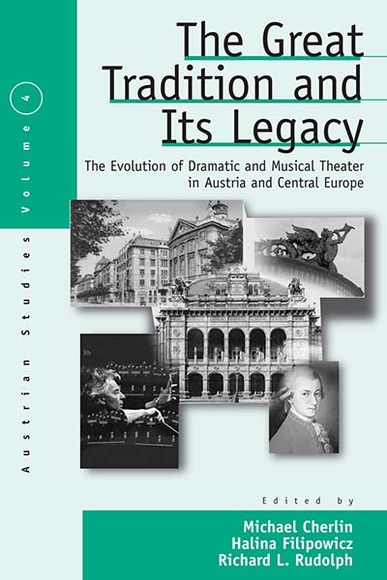
The Great Tradition and Its Legacy: The Evolution of Dramatic and Musical Theater in Austria and Central Europe
Austrian and Habsburg Studies, vol. 4
Edited by Michael Cherlin, Halina Filipowicz and Richard L. Rudolph
Both dramatic and musical theater are part of the tradition that has made Austria - especially Vienna - and the old Habsburg lands synonymous with high culture in Central Europe. Many works, often controversial originally but now considered as classics, are still performed regularly in Vienna, Prague, Budapest, or Krakow. This volume not only offers an excellent overview of the theatrical history of the region, it is also an innovative, cross-disciplinary attempt to analyse the inner workings and dynamics of theater through a discussion of the interplay between society, the audience, and performing artists.
New York: Berghahn Books, 2003. 290 pp., ISBN: 978-1-57181-173-8, $135.
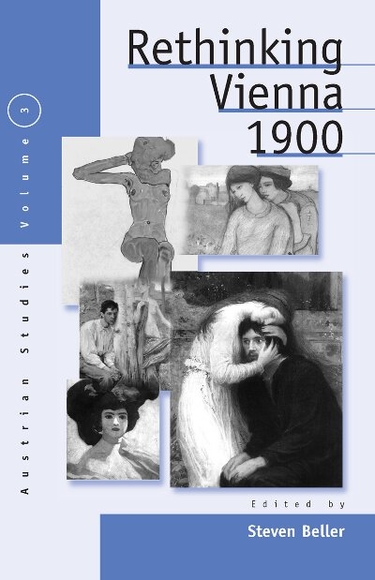
Rethinking Vienna 1900
Austrian and Habsburg Studies, vol. 3
Steven Beller
Fin-de-siècle Vienna remains a central event in the birth of the century's modern culture. Our understanding of what happened in those key decades in Central Europe at the turn of the century has been shaped in the last years by an historiography presided over by Carl Schorske's Fin de Siècle Vienna and the model of the relationship between politics and culture which emerged from his work and that of his followers. Recent scholarship, however, has begun to question the main paradigm of this school, i.e. the "failure of liberalism." This volume reflects not only a whole range of the critiques but also offers alternative ways of understanding the subject, most notably though the concept of "critical modernism" and the integration of previously neglected aspects such as the role of marginality, of the market and the larger Central and European context. As a result this volume offers novel ideas on a subject that is of unending fascination and never fails to captivate the Western imagination.
New York: Berghahn Books, 2001. 304 pp., ISBN: 978-1-57181-139-4, $135.
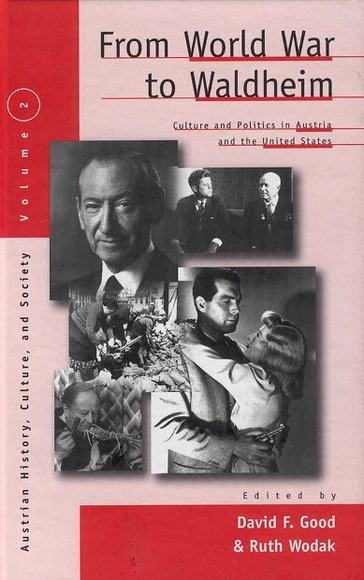
From World War to Waldheim: Culture and Politics in Austria and the United States
Austrian and Habsburg Studies, vol. 2
David Good and Ruth Wodak
The growing internationalization of the world poses a fundamental question, i.e., through what mechanisms does culture diffuse across political boundaries and what is the role of politics in shaping this diffusion? This volume offers some answers through the case study of the relationship between two quite different states during the Cold War era - Austria, a small neutral country, and the United States, the reigning superpower. The authors challenge naive notions of cultural diffusion that posit the submission of small "peripheral" areas to the dictates of hegemonic powers at the "core." "Americanization" has no doubt taken place since 1945; however, local forces crucially shaped this process, and Austrian elites enjoyed considerable leeway in pursuing "Austrian" political objectives. On the other hand, with the expulsion of Vienna's cultural and intellectual elite after the Anschluß, the United States, more than any othercountry, became heir to the rich cultural legacy of "Vienna 1900," which profoundly shaped politics and culture in both its "high" and popular forms in postwar America. The relationship climaxed and came full circle with the unfolding of the Waldheim affair, which forced Americans and Austrians to reinterpret the meaning of the Nazi era for their own history in a confrontation with the "other."
New York: Berghahn Books, 1999. 256 pp., ISBN: 978-1-57181-103-5, $135.

Austrian Women in the Nineteenth and Twentieth Centuries
Austrian and Habsburg Studies, vol. 2
David Good, Margarete Grandner, and Mary Jo Maynes
This volume, the first of its kind in English, brings together scholars from different disciplines who address the history of women in Austria, as well as their place in contemporary Austrian society, from a variety of theoretical and methodological perspectives, thus shedding new light on contemporary Austria and in the context of its rich and complicated history.
New York: Berghahn Books, 1996. 250 pp., ISBN: 978-1-57181-065-6, $135.
Other CAS Scholarly Books
Michael Cherlin, Halina Filipowicz, and Richard L. Rudolph, eds. The Great Tradition and Legacy: The Evolution of Dramatic Musical Theater in Austria and Central Europe (New York: Berghahn Books, 2012)
Vedran Dzihic and Thomas Schmidinger, eds. Looming Shadows: Migration and Integration at a Time of Upheaval. European and American Perspectives. (Washington, DC: 2011)
Gary B. Cohen, Ben W. Ansell, Robert Henry Cox, and Jane Gingrich, eds. Social Policy in the Smaller European Union States. Contemporary European History, Vol. 9. (New York: Berghahn Books, 2011)
David F. Good and Randall W. Kindley, eds. The Challenge of Globalization and Institution Building: Lessons from Small European States. (Boulder, CO: Westview Press, 1997)
Richard L. Rudolph, ed. The European Peasant Family and Society: Historical Studies. (Liverpool: Liverpool University Press, 1995).
William E. Wright, ed. Austria, 1938–1988: Anschluß and Fifty Years. (Riverside, CA: Ariadne Press, 1995).
David F. Good, ed. Economic Transformations in Eastern Europe: Legacies from the Past and Prospects for the Future. (London: Routledge, 1994)
David F. Good, Margarete Grandner, and Mary Jo Maynes, eds. Frauen in Österreich. Beiträge zu ihrer Situation im 20. Jahrhundert. (Vienna: Böhlau, 1994)
Charles Ingrao, ed. State & Society in Early Modern Austria. (West Lafayette, IN: Purdue University Press, 1994)
Richard L. Rudolph and David F. Good, eds. Nationalism and Empire: The Habsburg Empire and the Soviet Union. (New York: St. Martin's Press, 1992)
Kinley Brauer and William E. Wright, eds. Austria in the Age of the French Revolution, 1789–1815. (Minneapolis: Center for Austrian Studies, 1990)
William E. Wright, ed. Austria Since 1945. (Minneapolis: Center for Austrian Studies, 1982)